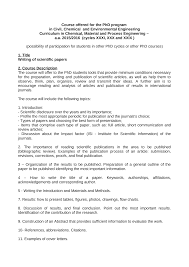The title of a manuscript is one of the most important aspects of the paper and is often the only aspect of the article that readers will see in the table of contents and most databases. The title should clearly state the focus of the paper and use relevant “keywords” to attract readers. The most effective title structure is one that is declarative or a phrase that explains the main conclusions of the study.
Italicize book titles
There are a variety of rules when it comes to how to italicize book titles in APA format. Unlike other pieces of writing, book titles should be italicized to make them more distinct from one another. Some publications require that you use quotation marks around the title, while others allow you to italicize it. The style you choose should depend on your audience and the type of publication you’re writing for.
When referencing a book, it’s important to follow Chicago Manual of Style guidelines. Book titles, for example, should be italicized when they’re freestanding publications. For example, a handbook that contains several articles should italicize the title of each article, and then separate the articles using a comma. Likewise, a paper that is based on a law or legal document should capitalize the title as well.
If a book title is part of a series, it’s best to italicize the whole series rather than just the title. This way, readers and editors will not get confused when trying to decide which book is the first in a series. Besides, it’s important to remember that a book title can’t be italicized in all places. So, if it’s part of a series, it’s best to stick with the style guide when it comes to this style.
Avoid abbreviations
While it is acceptable to use abbreviations, they should only be used when they will have a positive effect on your reader. For example, if you are writing about the National Health Service, you should first write NHS, and then change it to NHS from this point on. Also, make sure to define abbreviations you use in your paper. Some journals may ask you to use a standard abbreviation for your references.
Another example of an abbreviation is “ABC.” This stands for the American Bowling Congress. This acronym may seem more familiar to some readers, but it is unwieldy. Instead of ABC, you can use VLCADD. This will make the article more readable. Abbreviations are helpful for writers who need to keep their word count to a minimum. For those who need to abbreviate terms, this is an excellent option.
In addition to the title, abbreviations are also acceptable for the abstract. Most journal editors discourage using abbreviations in the title, while most journals allow them. However, if you’re writing an article title, it’s important to spell out the term the first time. In addition, you should include parenthetical abbreviations in the Abstract section of the paper.
Avoid ambiguous titles
There are some important rules that need to be followed when writing an article title. The title should give the reader an idea of the subject matter, but the content should be vague enough that readers will not know what to expect. This is why you should avoid ambiguous titles, but how do you avoid them? Let’s look at a few examples. In the first example, a 2004 report by the British Academy discussed the role of the social sciences and humanities in economic growth. The title, however, contained a vague quote from David Hume and used archaic spelling.
When writing an article title, never use symbols or non-Latin punctuation. Some browsers don’t recognize these characters. If you absolutely need to use a symbol, use it in the title of your article, rather than the title. The symbol itself would be a rectangle box, not a comma or semicolon. Fractions should be written as MOS and FRAC, not as a hyphenated word.
Another rule of thumb is to avoid using a term that has multiple meanings. If the word has multiple meanings, you should disambiguate it using an alternative name that is commonly used in reliable sources. Using a non-neutral term is risky for the readers of the paper. It can also cause confusion. Hence, the title of an article must be clear, concise, and meaningful.

